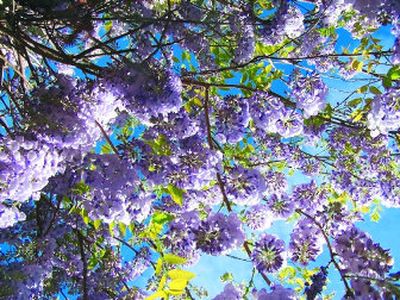Wisteria requires years of patience

I have a wisteria I planted six years ago and cannot get it to bloom. It has been pruned back as directed but no blooms.
Diane Nebel, Spokane
Wisteria can be a challenge to get to bloom here. If your plant was small when you bought it, it may still be too young to bloom. Grafted plants bloom sooner than plants grown from seed. Seed grown wisteria can take as long as 10 to 15 years to bloom, while grafted plants may take a little less time.
Chinese wisteria (Wisteria sinensis), the most popular variety, is close to its hardiness limit here and the flower buds are the first thing to go when we get a cold snap in the winter. The tag will say it’s hardy to USDA Zone 5, but I think it is a very high Zone 5.
If the plant is getting any fertilizer, it may be putting its effort into vegetative growth at the expense of flower buds. Cut off the fertilizer for the year completely even if it means not fertilizing other plants around it.
Lastly, wisteria plants need full sun and a steady moisture supply. They can handle a little afternoon shade from our August sun here. Soak them deeply every 10 days or so in the heat of the summer.
Planting bare-root trees
I just bought some potted, balled and burlaped trees. Someone told me that you are supposed to wash all the dirt off the roots before you plant them. I’ve never heard of this.
Steve, Spokane
This is a new trend that is being advocated by some tree specialists and it has merit. Most trees are grown in clay at the nursery because the clay holds the root ball together through all the transporting. Clay however isn’t the best medium for the tree to grow in.
By washing all the dirt off the root ball, you can really see what the roots look like and trim off any damaged or circling roots. You will also be able to find the root flare where the trunk flares out to form the roots. Experts have found that trees should be planted no deeper than the root flare. If they are, the tree will not be as vigorous or long lived. Planting them in new soil lets you correct some of the problems.
Now here is the tricky part of all this. Washing off the roots has to be done carefully at the time of planting so there is enough time to start and finish the entire job. This minimizes the bare roots’ exposure to drying air. When you plant the tree, work the soil into the root area. Have a hose running in the hole as you plant to help do this. Tamp the soil down gently and build a dike around the root area. Fill the area with water again. Check the tree the next day and add soil to settled areas.